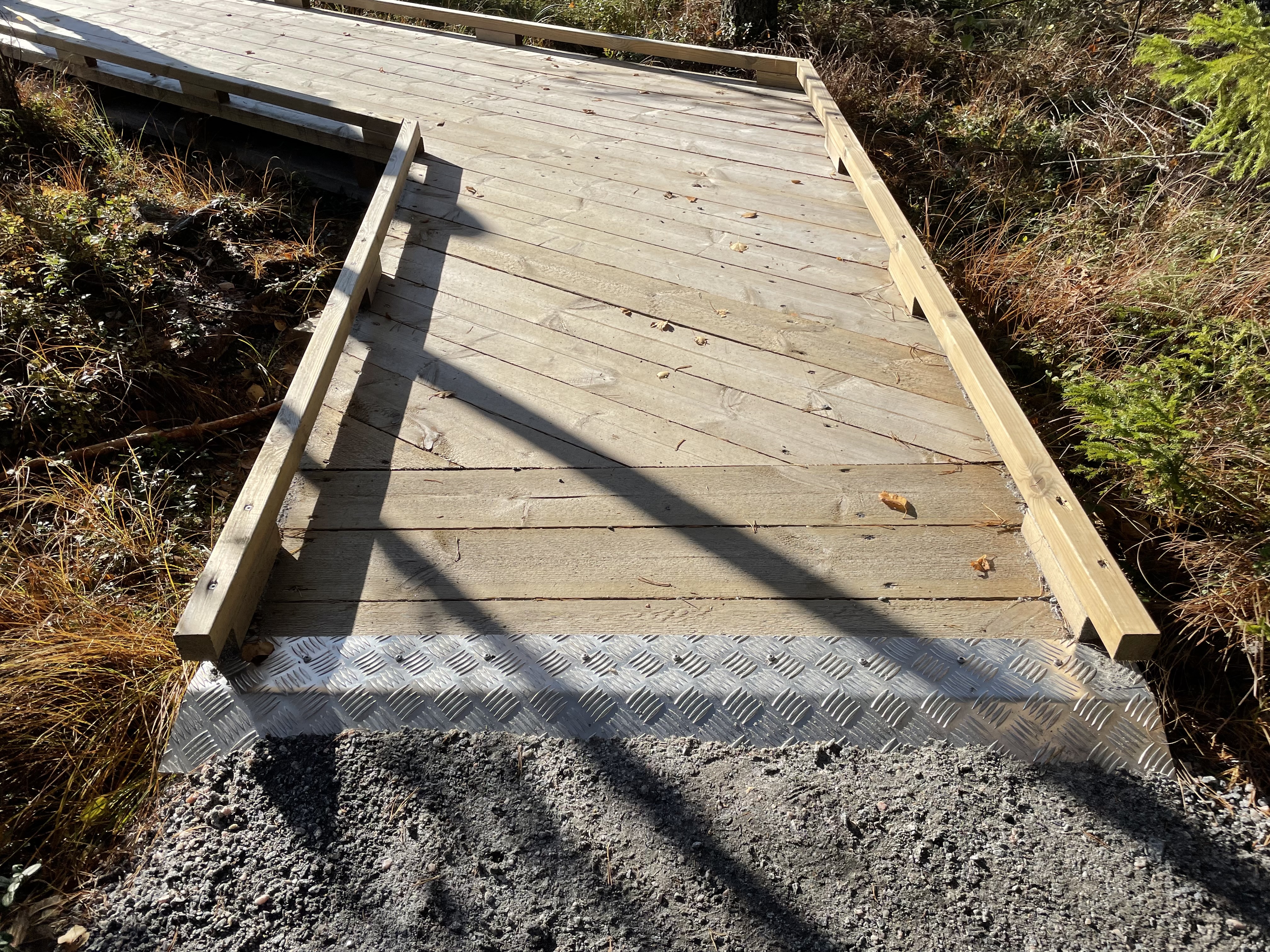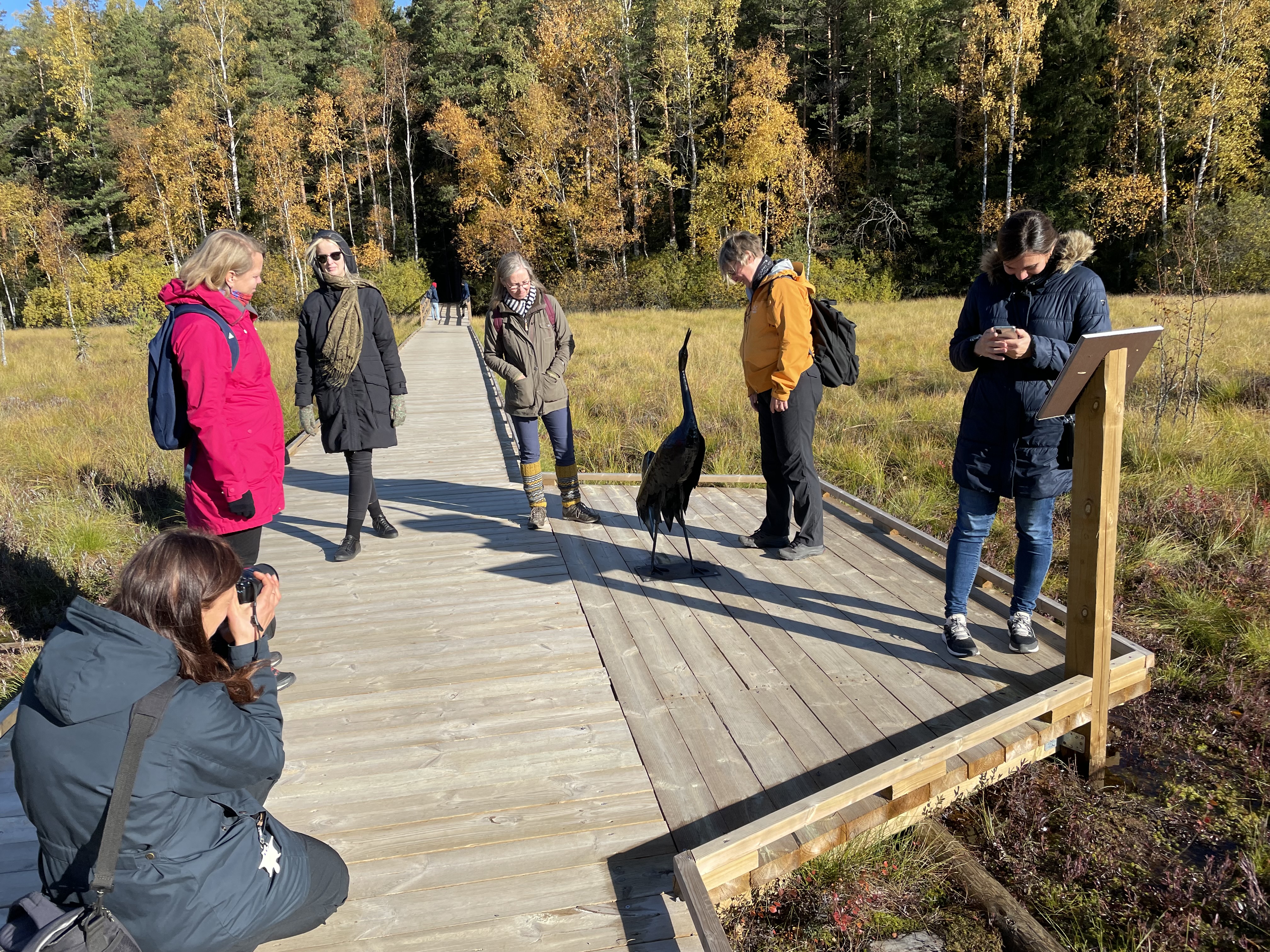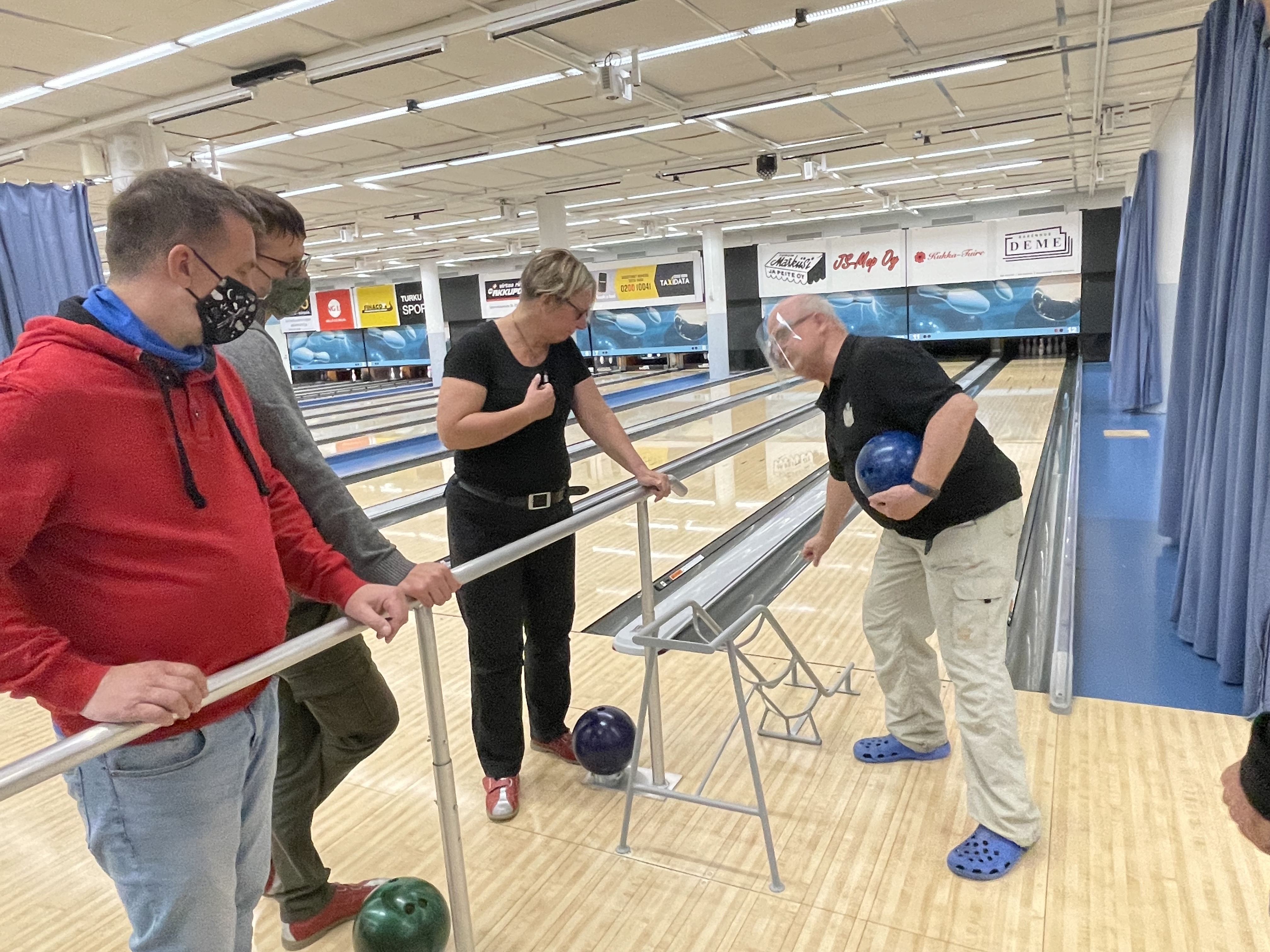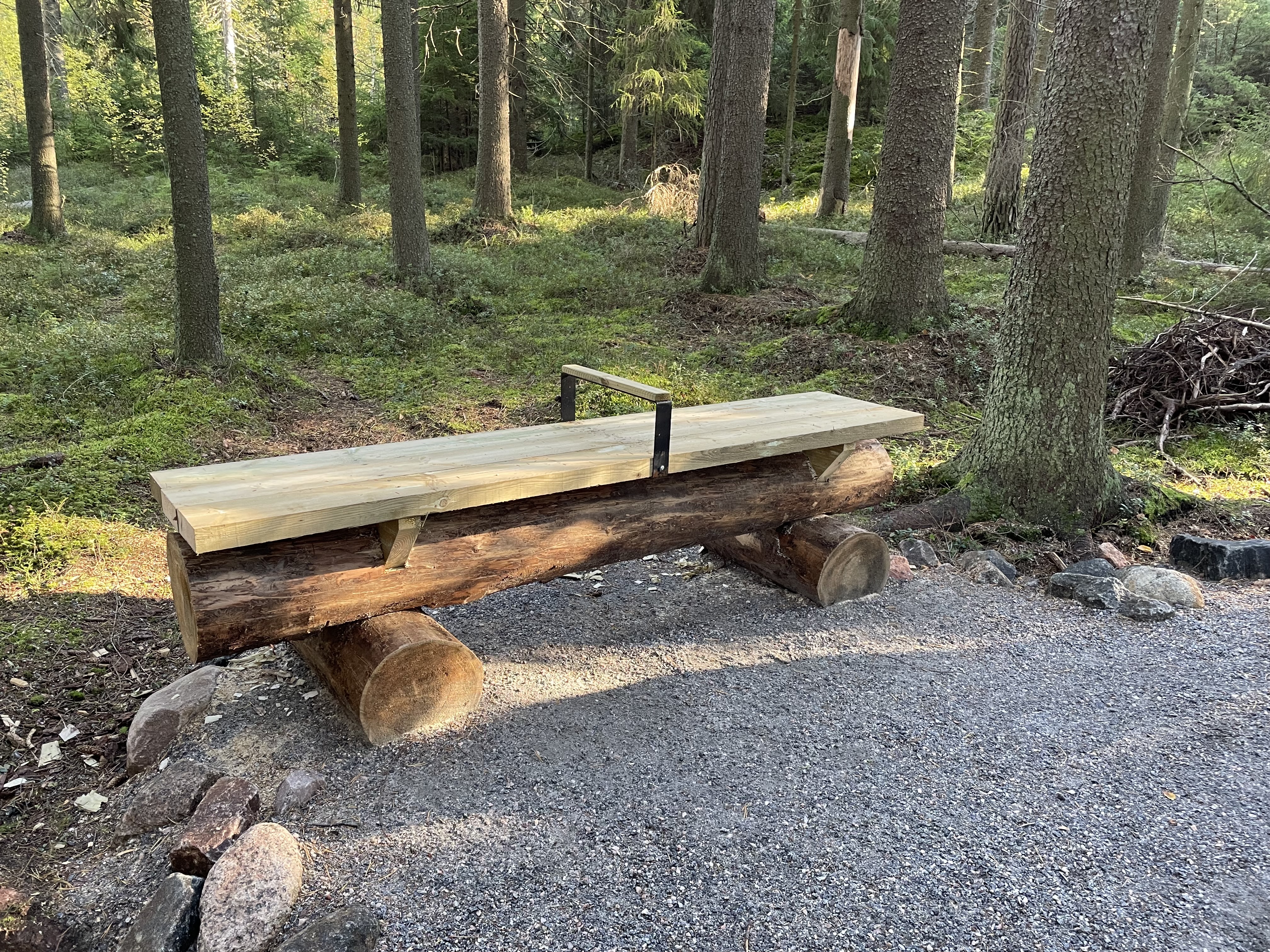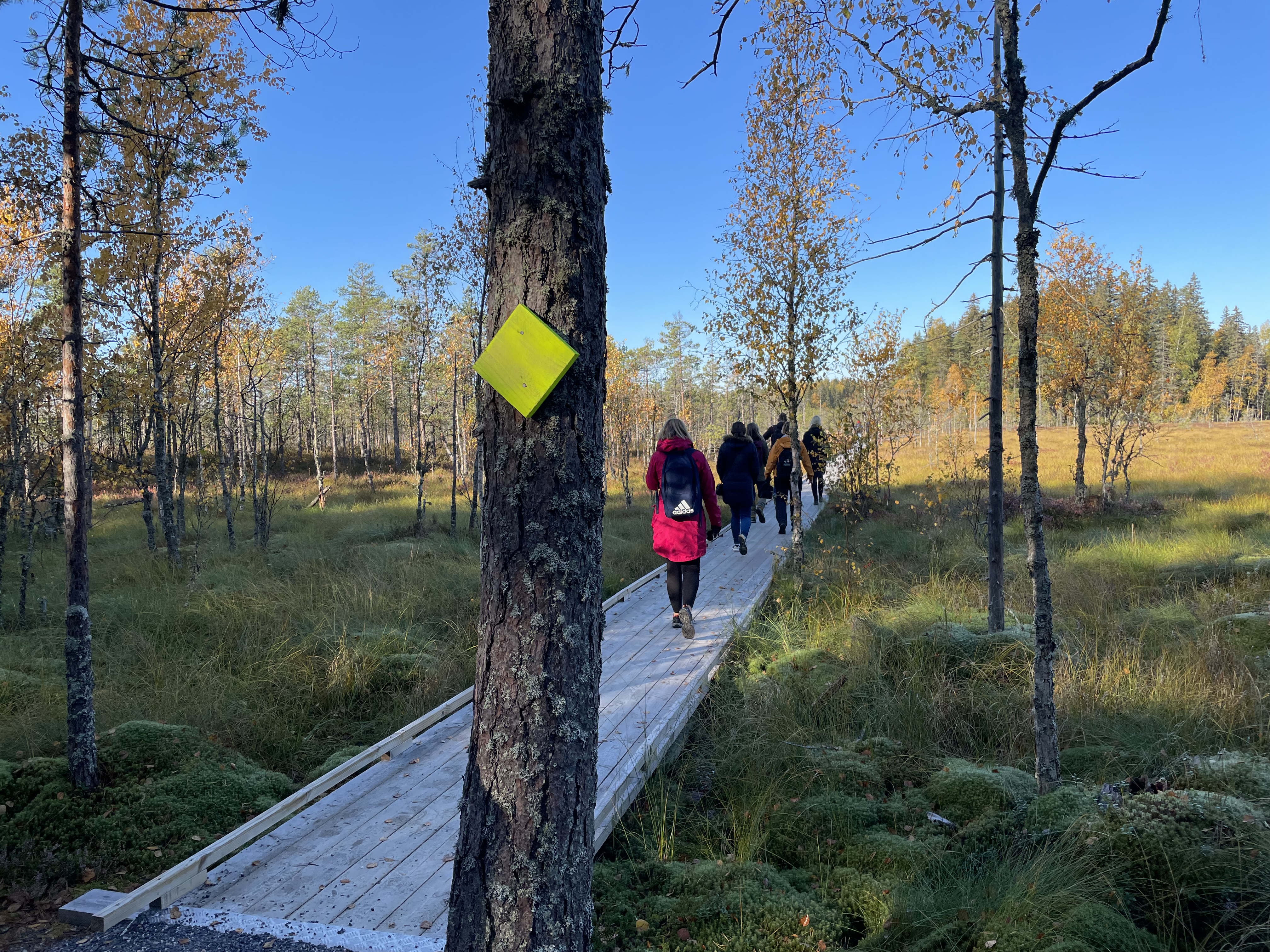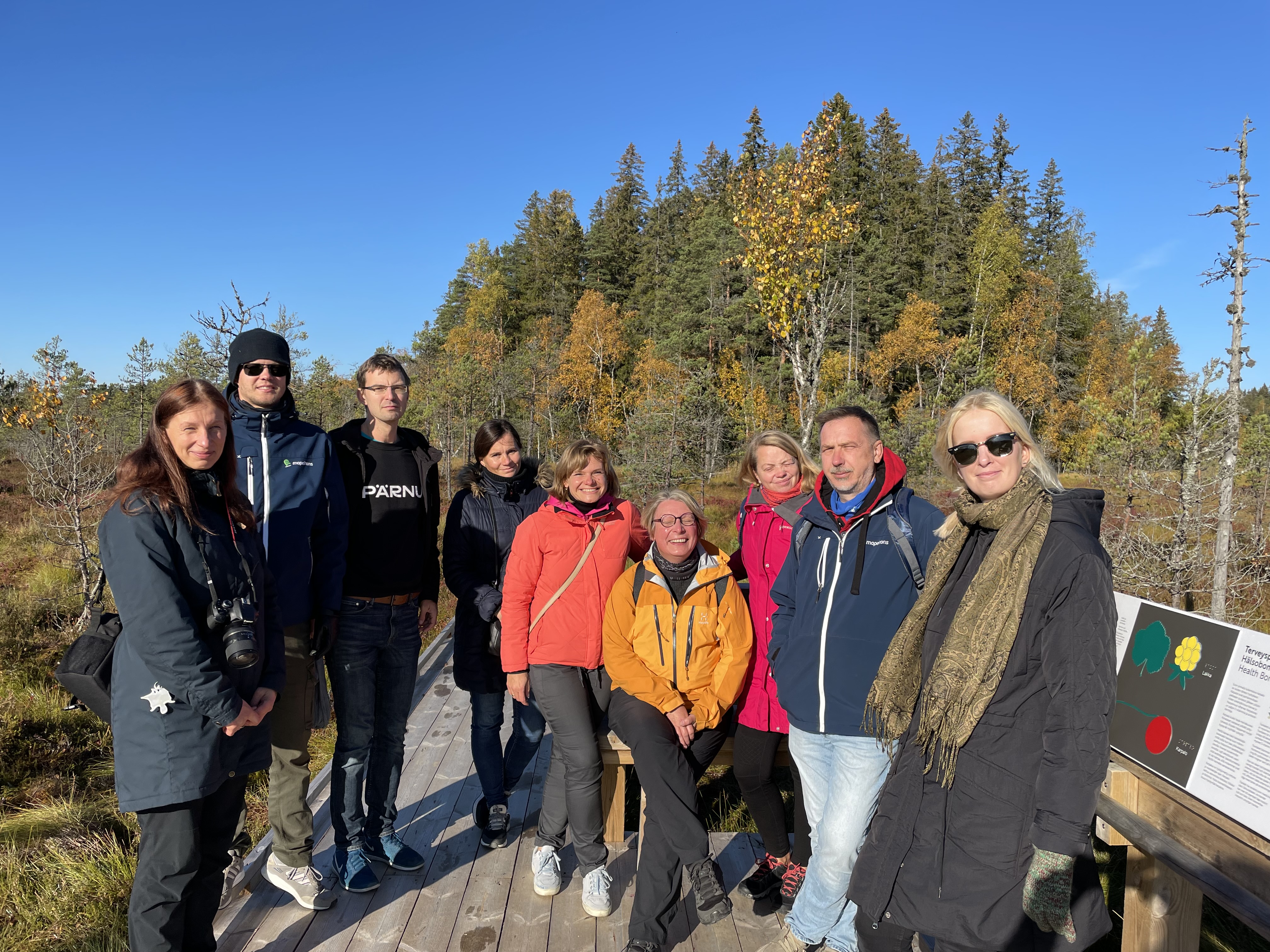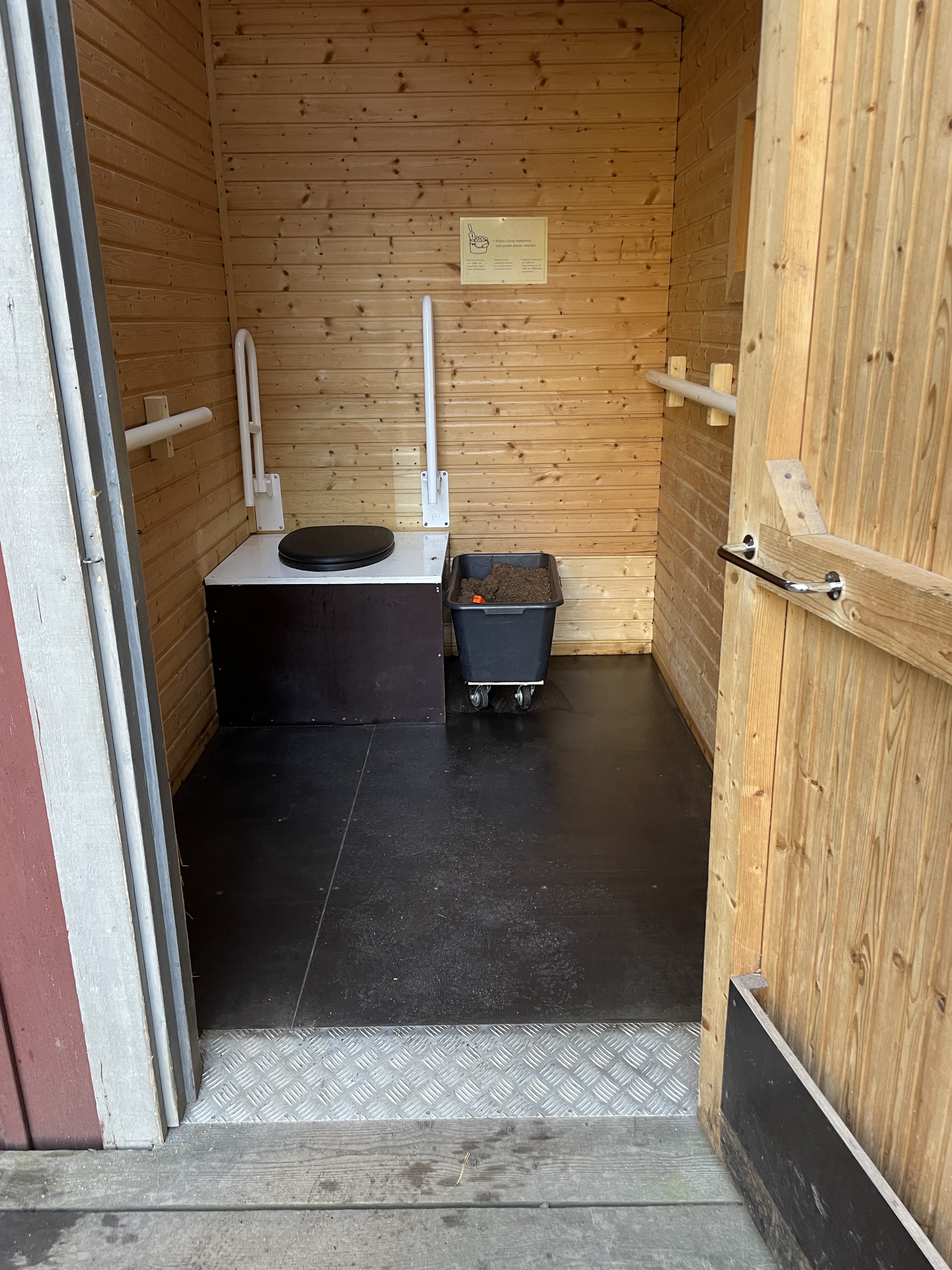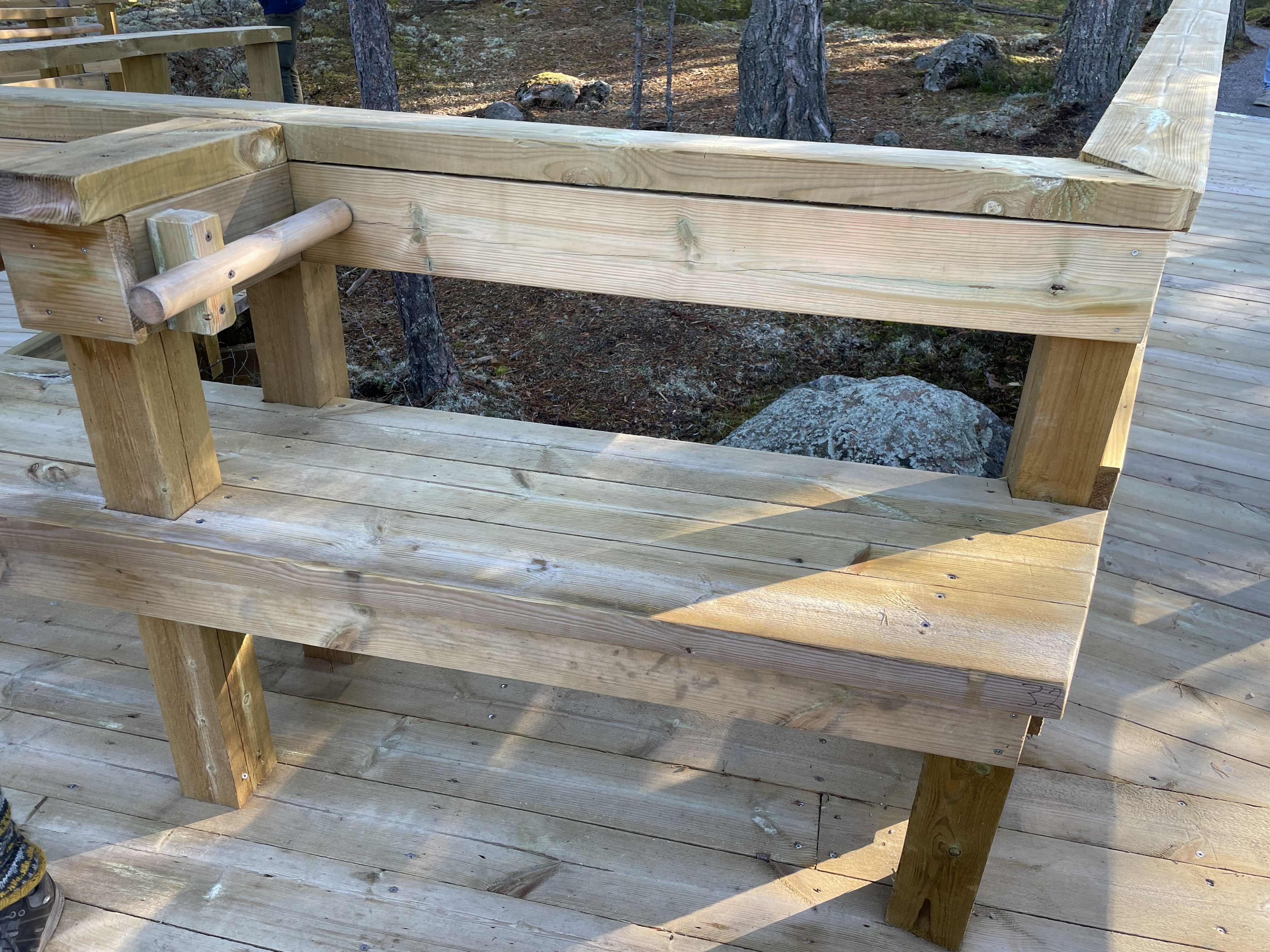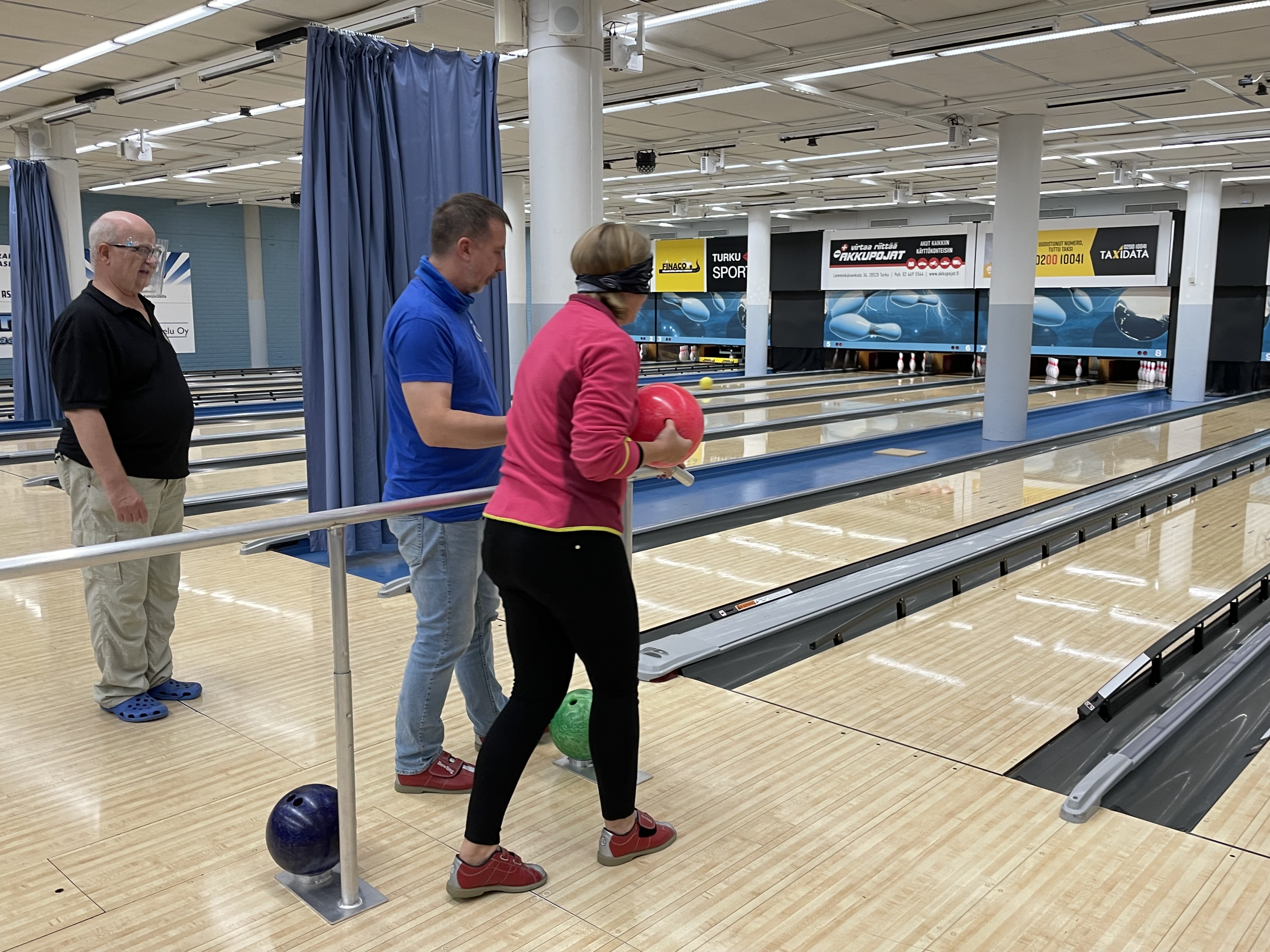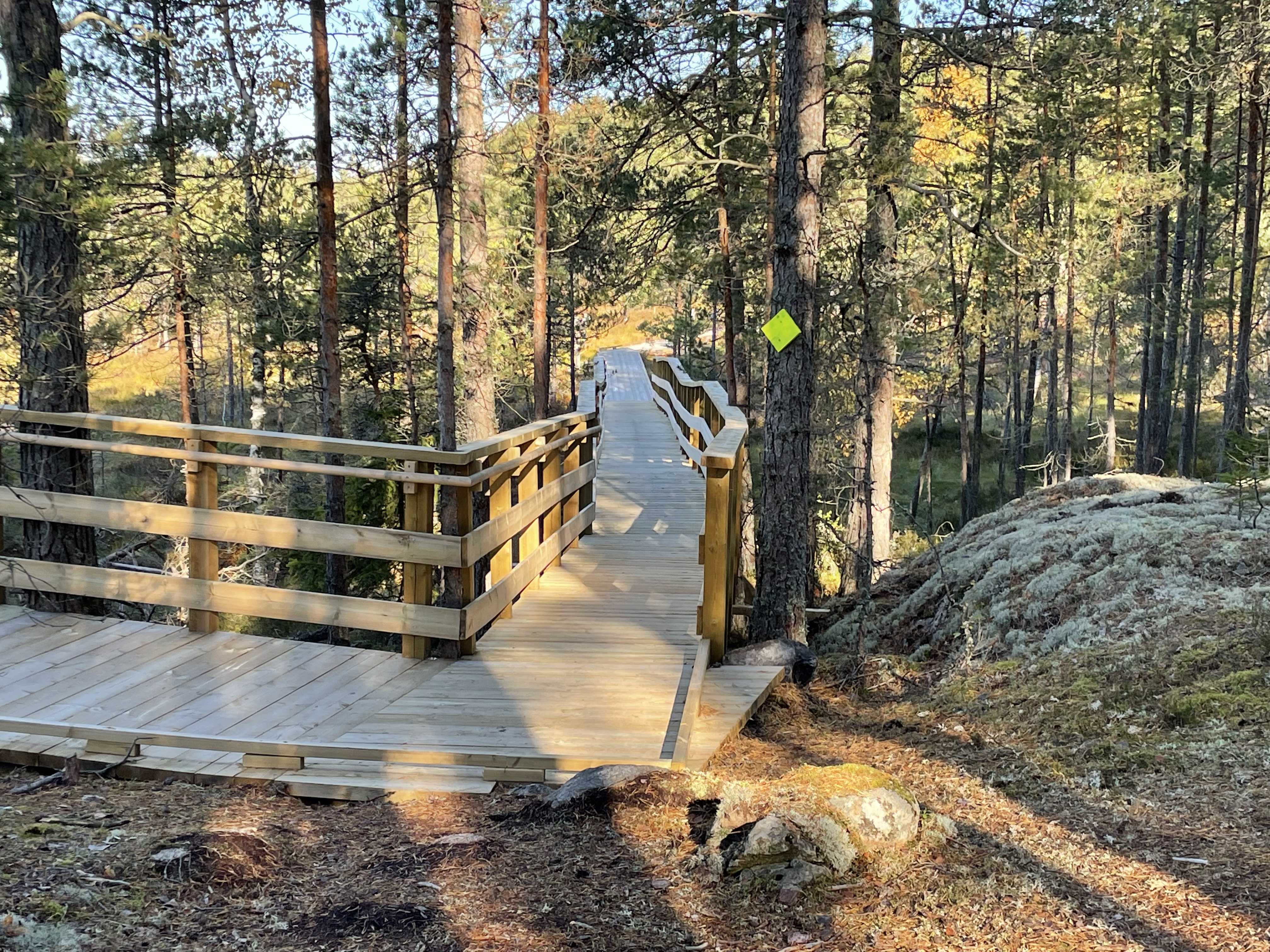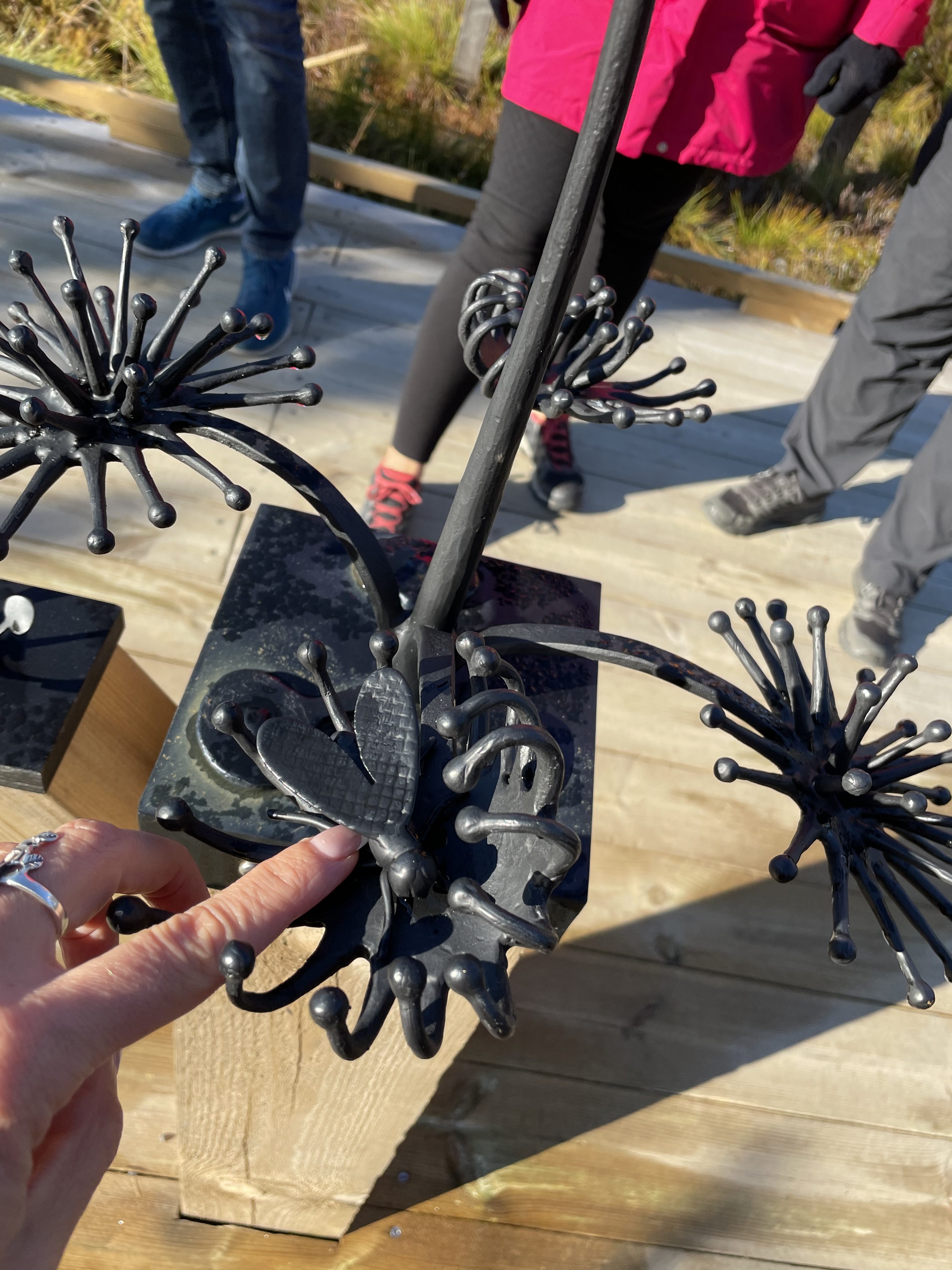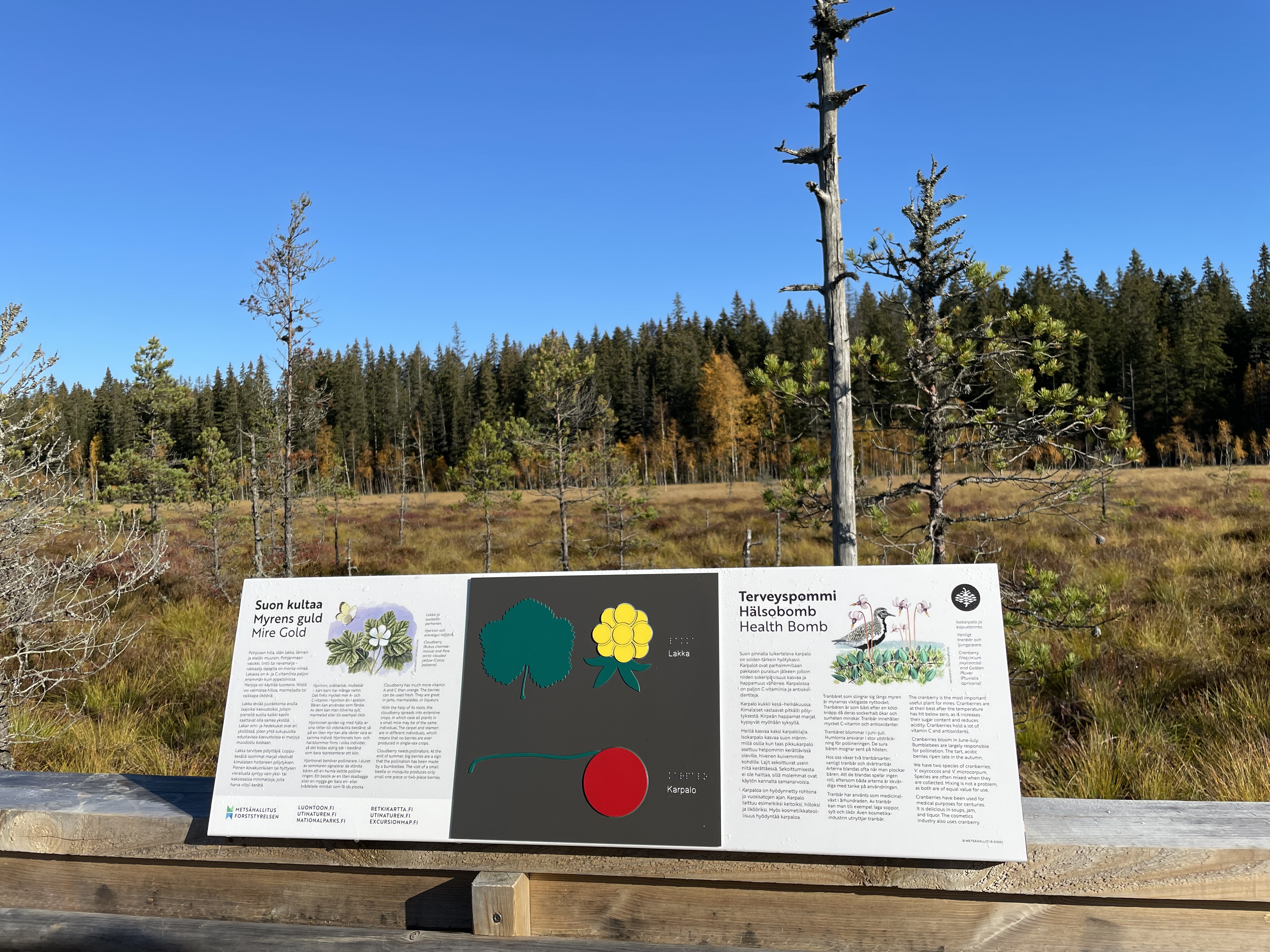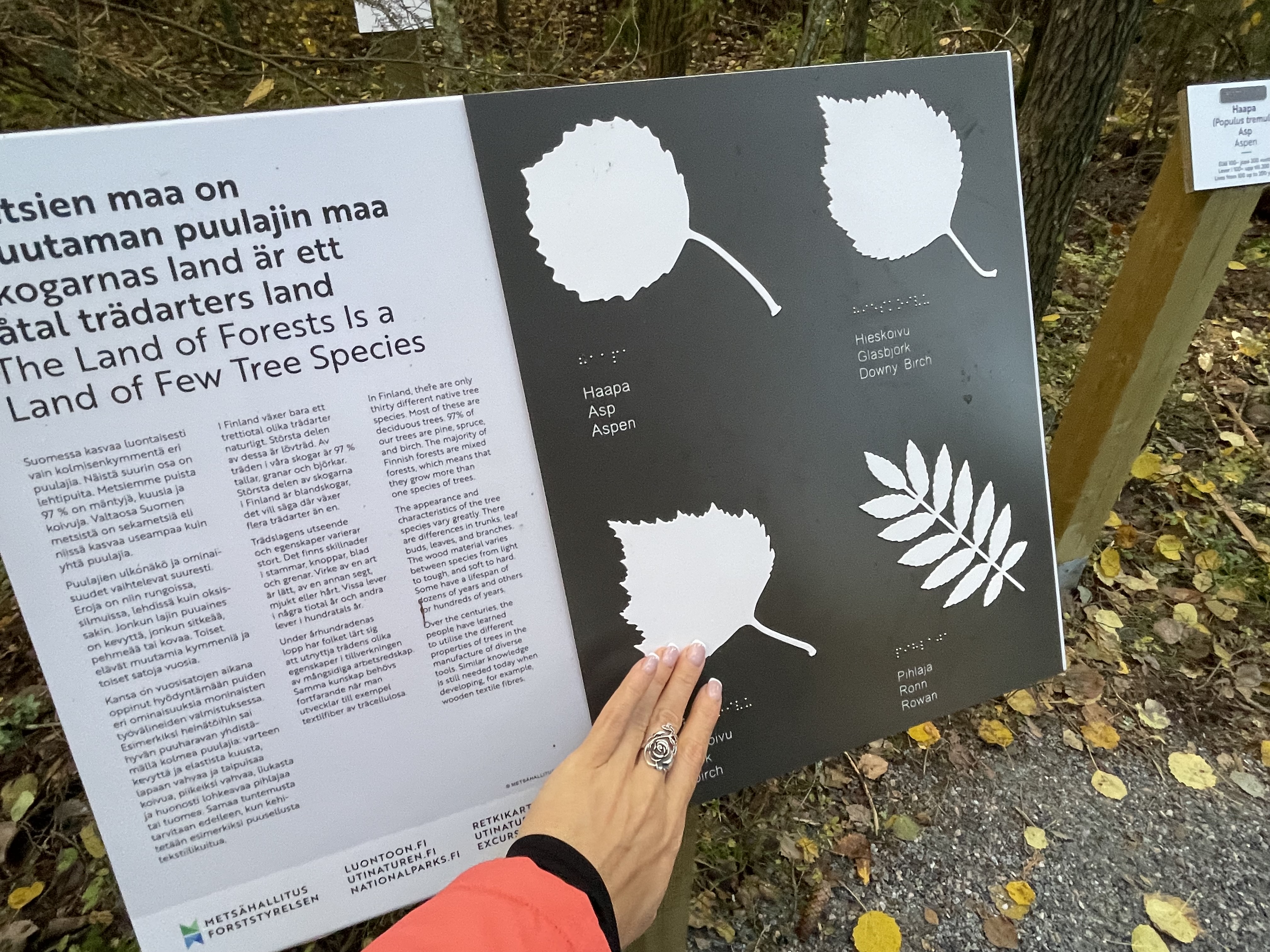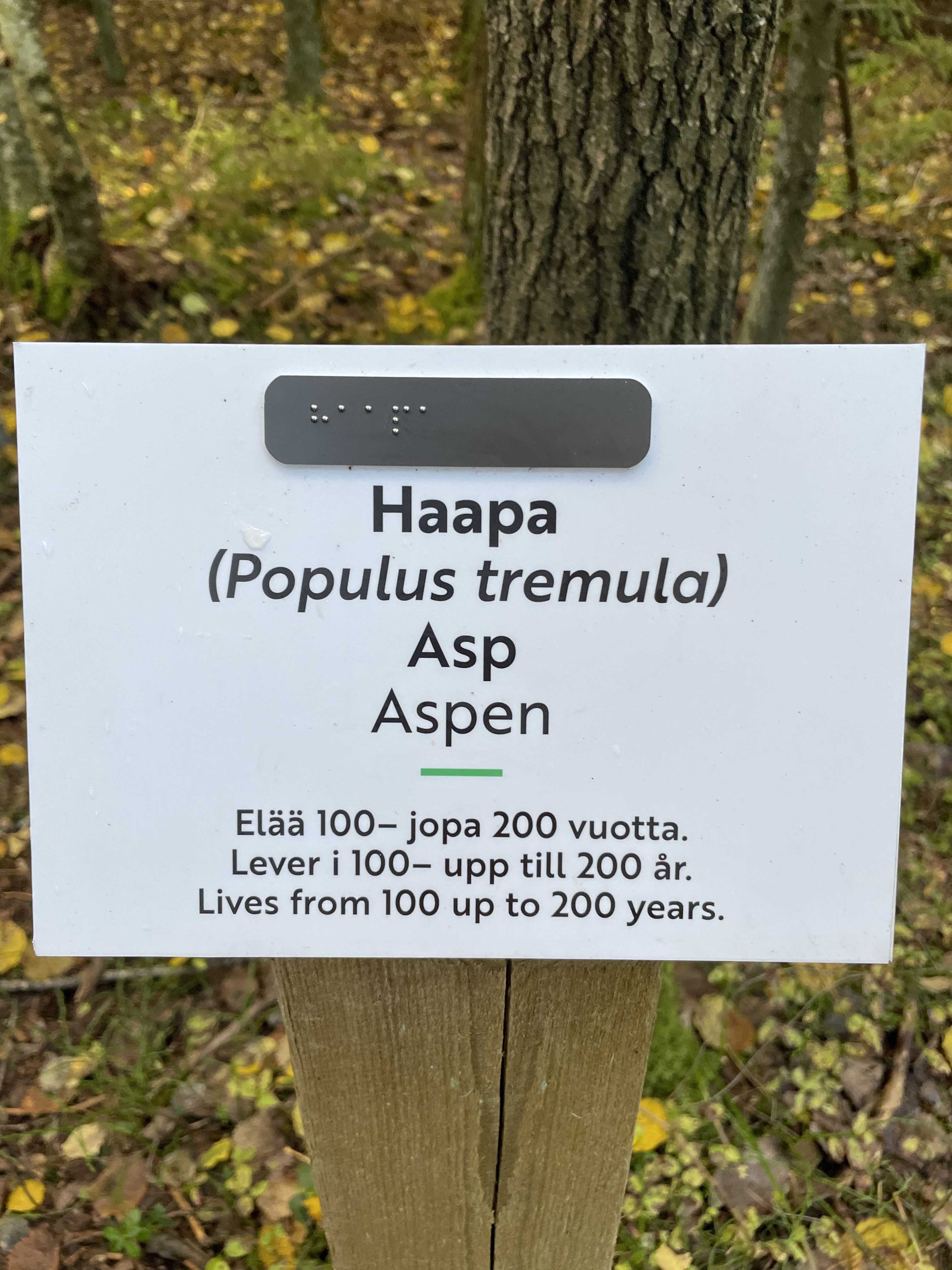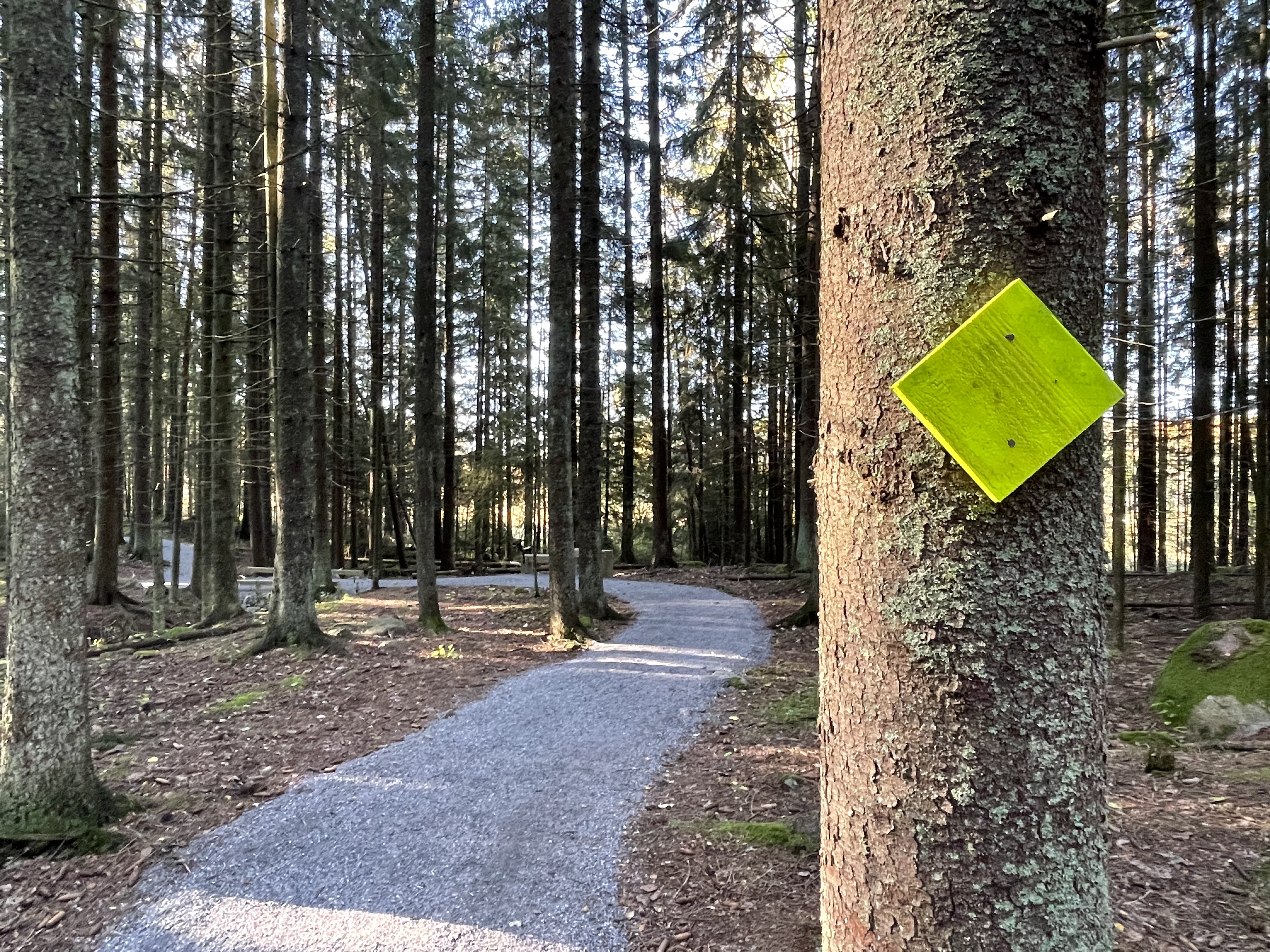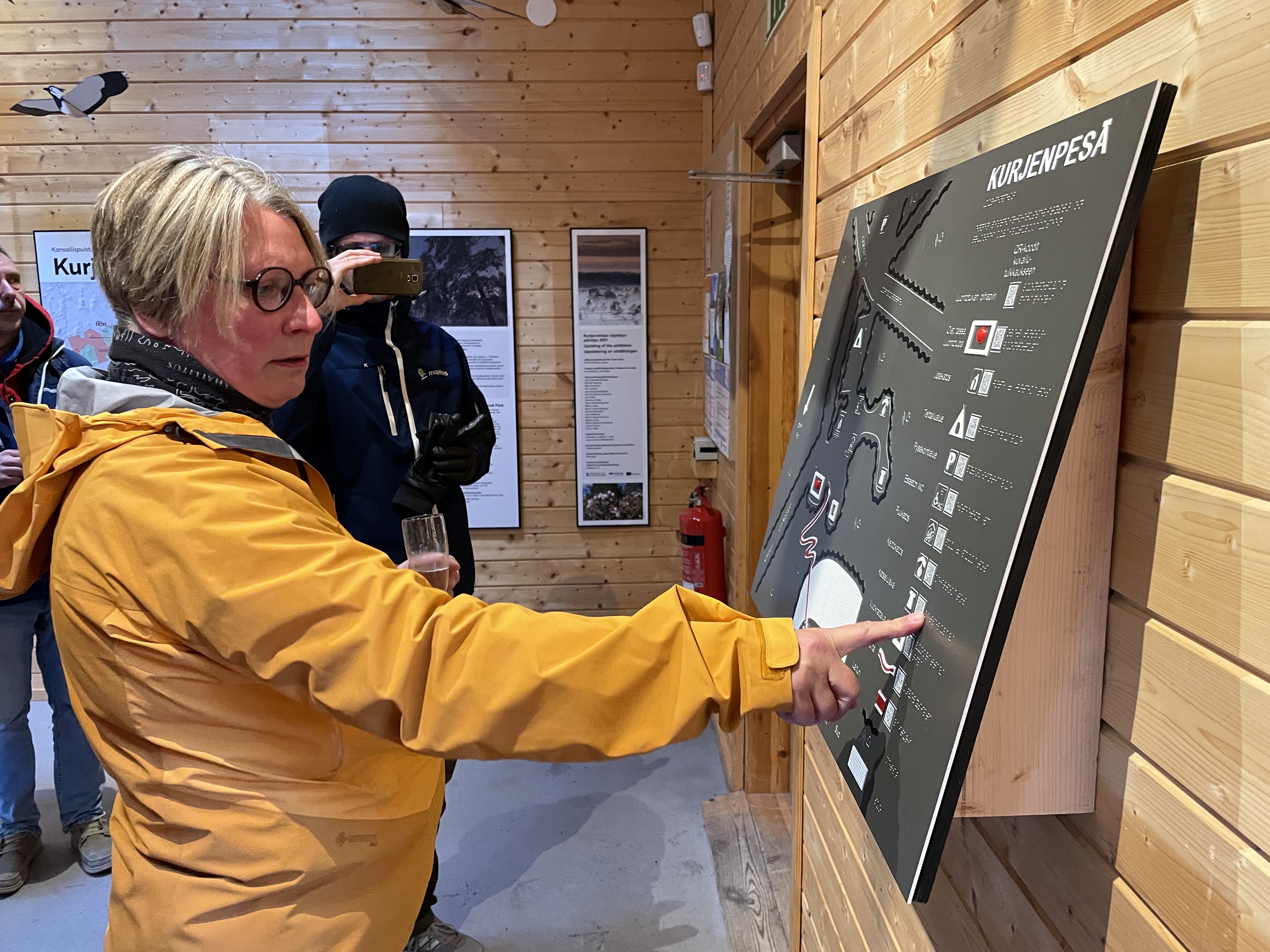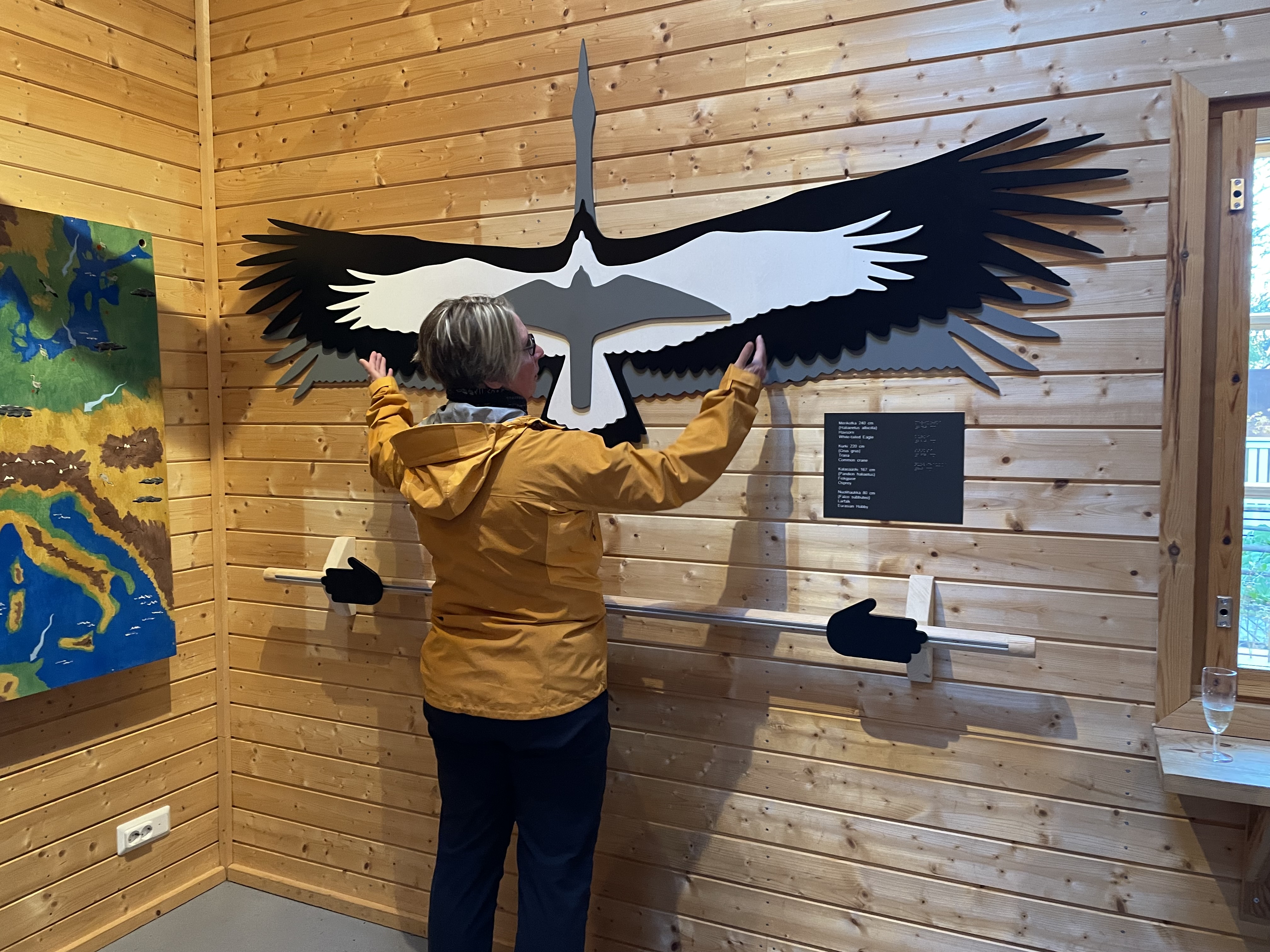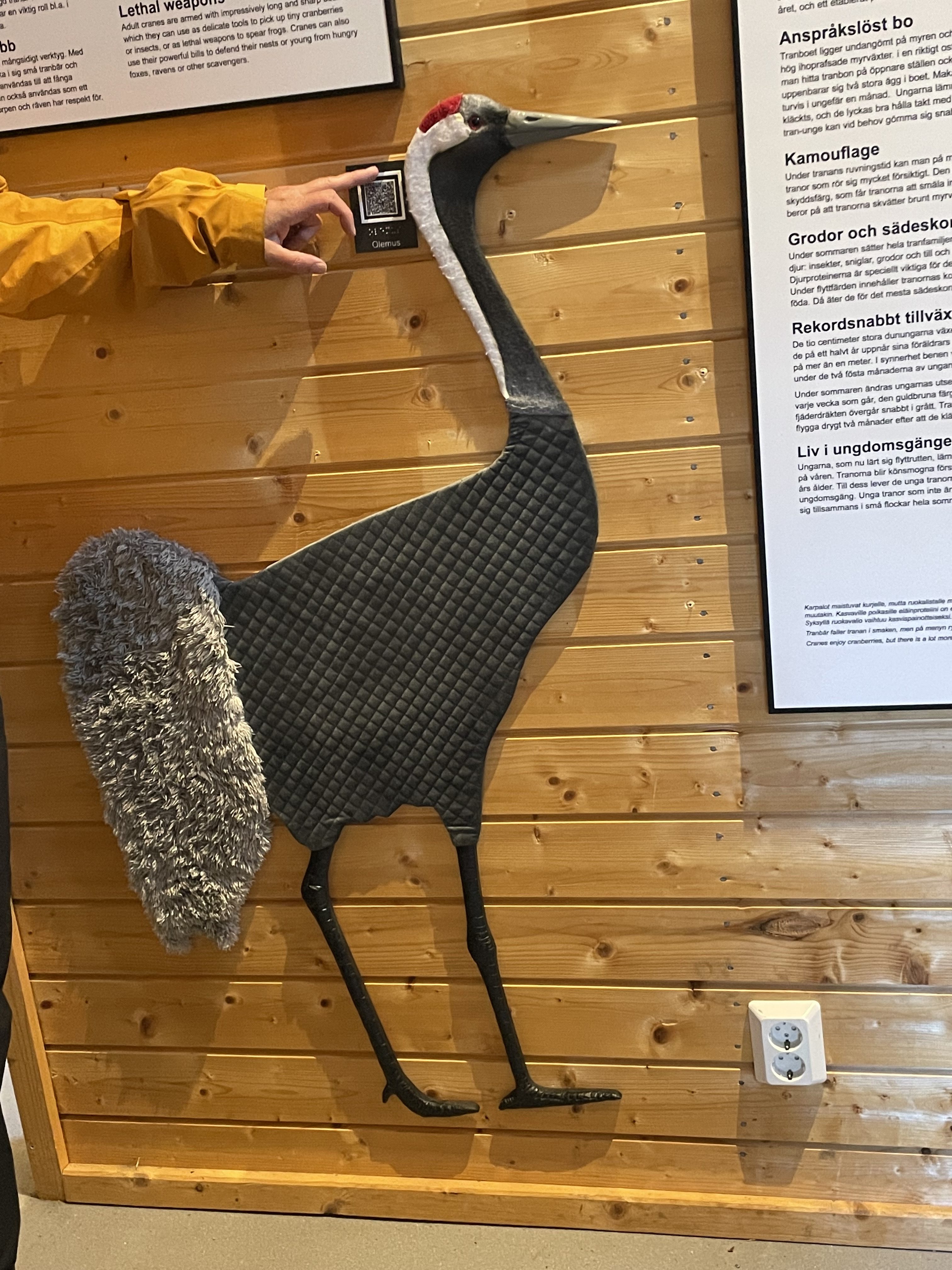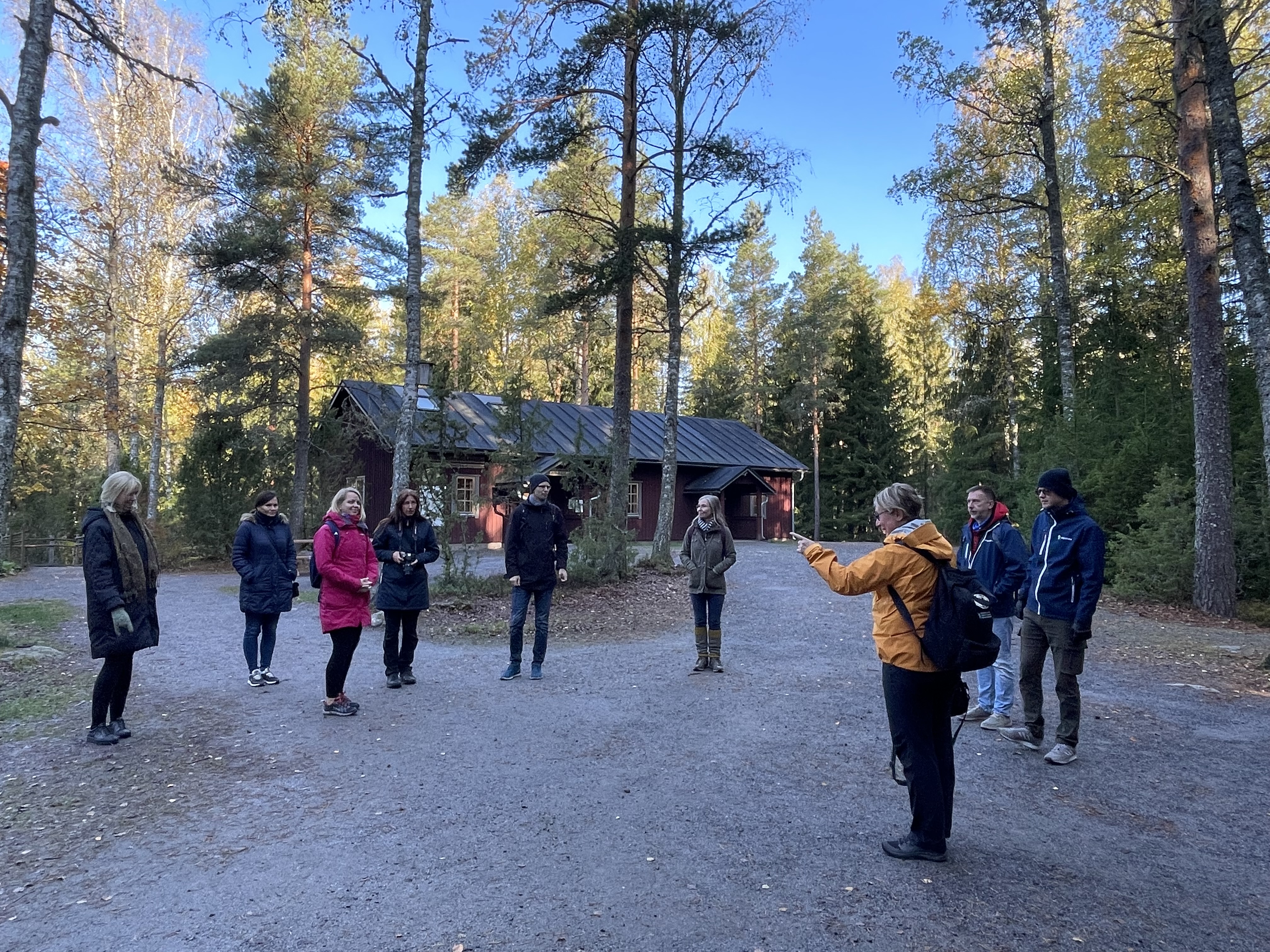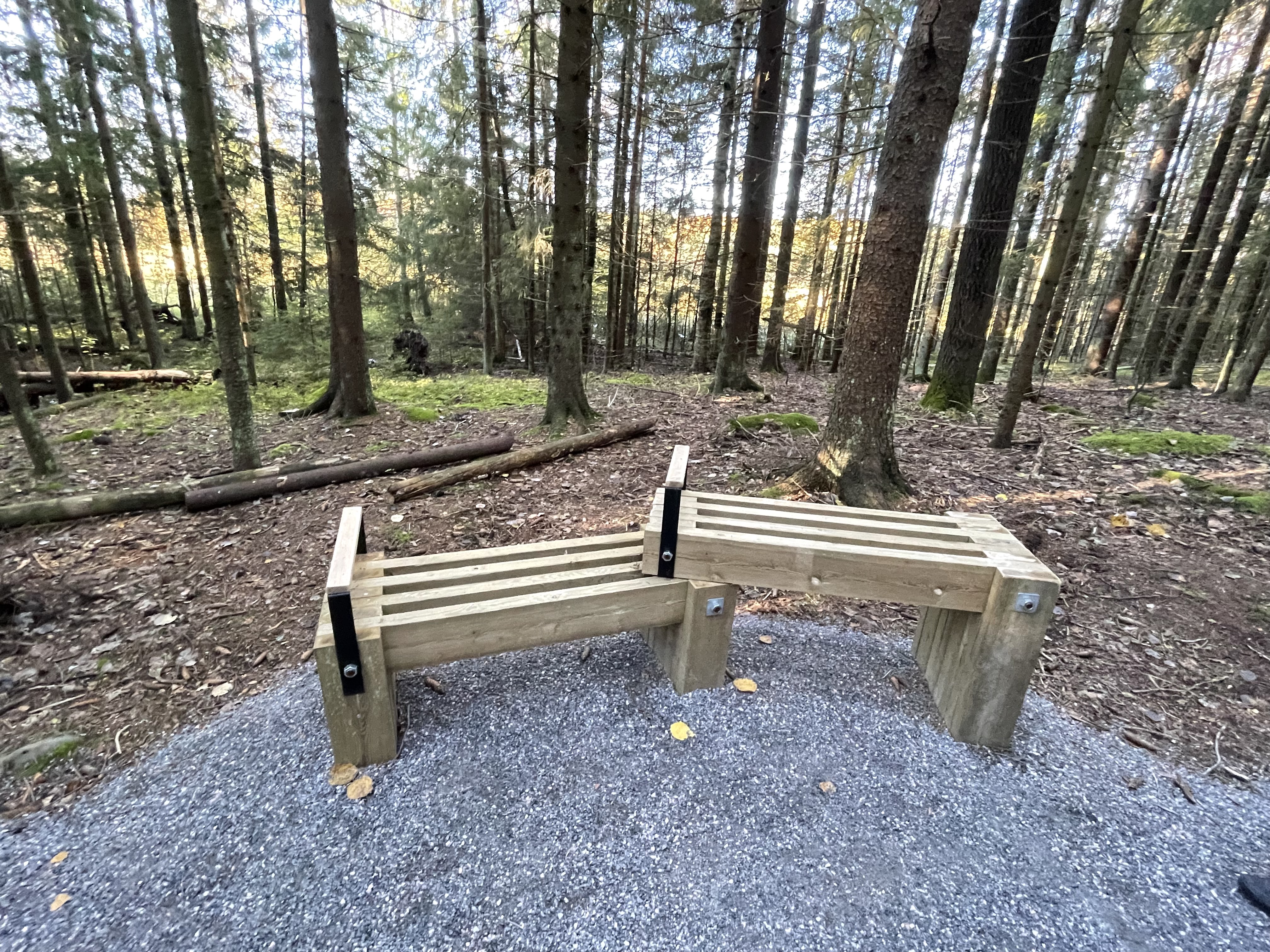
CB786 “Nature Access to All (NatAc)”
On 27-28 September the Nature Access to All project NatAc partners met in Turku (Finland), to discuss the activities carried out over the last period and the overall results reached in the project. The team also visited its Finnsih Partner’s – Parks & Wildlife Finland (Metsahallitus) – infrastructure imporvements made within the project to improve accessibility in Kurjenrahka National Park!
Here below we’ve selected some nice pictures from our last projet meeting and nature trail infrastructure improvements at Kurjenrahka National park!
The project lasted for 2,5 years, it was a large-scale project, with lots of different activities, involvement of accessibility experts, local municipalities, building works, and it has provided a really significant impact on the improvement of nature accessibility in the Central Baltic Region and we, as the project team, are truly satisfied and happy for the work done. With project support in Kurzeme:
- outdoor nature class has been installed at Lake Liepāja Zirgu island together with a wheelchair-accessible toilet;
- a wheelchair-accessible toilet constructed at Skrunda walkinig trail along the River Venta;
- 9 benches, a wheelchair-accessible toilet and a protective boardwalk border have been installed at Lake Būšnieku nature trail;
- additional trail stretch – Mazātak – constructed at Alsunga Žibgrava nature trail to allow wheelchair users to access the small loop of the trail, together with a bench and a wheelchair-accessible toilet;
- additional, wheelchair accessible trail stretch – the stingers path – constructed at Kalēti forest park Priediens together with benches, a wheelchair accessible table, a ramp to access the info hut and a wheelchair-accessible toilet;
- additional trail stretch constructed at Kazdanga park, which connects the parking lot with the lake boardwalk, thus providig access for wheelchair users to the boardwalk, together with a resting area and a wheelchair-accessible toilet;
- a new trail has been constructed – Kazdanga Rowan alley – with lots of wooden sculptures, accessible to wheelchair users and persons with visual impairment, together with a wheelchair-accessible toilet.
Along with it, before infrastructure works in the project started and together with accessibility experts, we have developed a concise and easy to use Accessibility Check-list. The nature trails Accessibility Check-list, which has been distributed to all local municipalities and the Nature Conservation Agency, is aimed at increasing the knowledge and awareness of trail administrators on suggested accessibility criteria. It consists of a number of criteria grouped under 7 sections: nature trail and resting area, parking lot, toilet, info stands and signs, stairs, watching platform, angling/boating site. We’ve also made a practical video guidance on how to carry out the inpsection on trail accessibility.
In parallel to infastructure improvements at trails, a number of other important activities have been made in the accessibility area:
- significantly improved and modernised mapeirons.lv website, uploading a detailed information on mkore than 100 new, accessible trails in Latvia, Estonia and Finland (incl. photos, Relive videos, GPX files);
- more than 100 accessible trails uploaded on the most popuar hiking websites and apps – AllTrails and Wikiloc;
- a Travel guide on accessible nature trails printed in four languages (LV, EST, FIN, ENG) with more than 100 trails in Latvia, Estonia and Finland;
- tactile cards with Braille script made for Alsunga Žibgrava nature trail, Kalēti forest park, Kazdanga park, Kazdanga Rowan alley, Lake Būšnieki nature trail, Lake Liepāja Zorgu island trail, Skrunda walking trail along the River Venta;
- innovative educational tool created, which helps to learn about nature for people with disabilities, particularly – people with visual impairment. The educational tool is easy and handy for nature education specialists or guides or the person itself to go to nature and, using the chest of senses, getting to know the three ecosystems (forest, bog, coast) and the characteristic features of animals and plants in each of them, by using different senses – sight, hearing, touch, smell. In the various pockets of the senses’ bags, there are different plants, stones, fossils, plaster animal foot-prints and eggs and many other stuff, which allows to understand flora and fauna through the five key senses. There are also numerous tactile cards in each bag characterising each of the ecosystems with tangible photos of animals and plants, as well as QR codes with animal and bird sounds.
- on 7 May in cooperation with the Europark Federation the international webinar was organised on nature access to all, where the NatAc Project Leader A.Lūse presented the work done in the project and discussed on the significance of nature accessibility, best practice solutions at trails, needs, challenges and prospects in diffefrent parts of Europe. 365 participants form all over Europe took part in the webinar, representing National parks, municipalities and NGOs.
- on 12 August the Accessibility Days event was organised at Kalēti forest park, to give a chance for disabled families to meet and spend time together, while hiking, seeing new trails, learning about nature through various senses and simply spending an exciting day in nature. 40 participants took part in the event. During the event the participants received roll-top back-packs, which are also easy to be hanged on a wheelchair, with a number of key items for a pleasant and relaxing rest at nature – food thermos, small, folding cutlery, belt bag, cap, water bottle. Younger participants reveived also puzzles and a pop-it game for training of the hand and finger motor skills.
- at all project infrastructure sites there have also been tactile info stands installed with tangible trail route lines, direction signs with accessibility pictogramms, as well as various tactile objects (wooden sculptures, figures made in organic glass, 3D hillfort mock-up, and all of the figures thematically characterises and fits the particular nature trail).
In the middle of September the project team also created 7 sincere video series on accessible trails in Kurzeme and the Central Baltic Region with very personal stories on why it is so essential for people with visual impairment, wheelchair users, disabled families, seniors to be active, be together with others, be in nature and have greater access to nature.
Many similar accessibility improvements have also been made by project partners in Estonia and Finland, where several accessible nature trails and other objects have been constructed, wheelchair accessible toilets, tactile objects, info stands, direcion signs with accessibility pictogramms installed, tactile cards and videos created and Accessibity Days’ events organised.
The project is being implemented with support of the Central Baltic Programme 2014-2020.
Information provided by:
Alise Lūse Project Manager
Tel.: +371 26567874, alise.luse@kurzemesregions.lv

